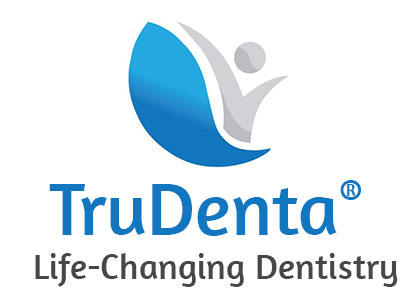TruDenta® – Truly Life-Changing Dentistry
 TruDenta is a drug-free dental pain management system with methods proven to help provide relief from chronic headaches, tinnitus, vertigo, and TMJ dysfunction. Today, Dr. Chad Johnson at Veranda Dentistry would like to share some information with readers about TruDenta and the conditions it can treat.
TruDenta is a drug-free dental pain management system with methods proven to help provide relief from chronic headaches, tinnitus, vertigo, and TMJ dysfunction. Today, Dr. Chad Johnson at Veranda Dentistry would like to share some information with readers about TruDenta and the conditions it can treat.
Chronic Headaches & Migraines
An estimated 3% of Americans suffer from chronic migraines, while 20% of people worldwide have tension headaches of some kind (including but not limited to migraines). Chronic headache sufferers are three times more likely to become depressed and are generally more likely to deal with anxiety, fatigue, and trouble sleeping than those who do not deal with chronic headaches.
Tinnitus
Approximately 1 in 5 people experience regular buzzing or hissing sounds in their ears. White-noise machines at night and masking devices worn in the ears during the day are the most commonly recommended treatments for tinnitus.
Vertigo & Dizziness
Vertigo is a disconcerting condition in which the world feels that it is physically moving independently from the sufferer. Balance, movement, and concentration are affected most, but depression, stress, fatigue, and anxiety are also common among vertigo sufferers. There are multiple conditions that are believed to contribute to vertigo – mouth and jaw problems, inner ear imbalances, medication side effects, and disorders that affect the brain’s blood supply.
TMJ Dysfunction or TMD
Temporomandibular joint and muscle disorders, commonly known as TMJ or TMD, are often earmarked by pain in the jaw joint muscles, but may also present stiffness, limited movement and range of motion, locking or radiating pain in the face, jaw, and neck (with or without locking, popping, or clicking sounds) and bite changes where the upper and lower teeth don’t line up properly. It is estimated that 10 million Americans suffer from TMJ issues.
Diagnosis with TruDenta
TruDenta uses advanced diagnostic technology to examine the musculoskeletal system of the head, neck, and jaw to isolate possible causes of the issues discussed above. (There is no simple test to diagnose migraines alone, but the evolution of technology has allowed certain potential causes to be ruled out.)
T-scan technology may be used to evaluate your mouth and jaw for dental imbalances, as it has the capability to determine the amount and direction of force every tooth in your mouth exerts and absorbs by measuring bite force and range of motion. The TruDenta doctor will also note your symptoms, your headache history, and examine those factors besides a comprehensive examination of your muscles.
Treatment with TruDenta
Diagnosis is followed up by a gentle whole-body treatment plan tailored to each individual patient’s symptoms. Several FDA-approved, painless technologies are used to provide immediate pain relief and long-term rehabilitation, including ultrasound, cold laser therapy, microcurrent and trigger-point manipulation techniques. Different symptoms require from 1 to 12 one-hour weekly treatments.
- Ultrasound – the application of sound waves helps increase blood flow and heat to sore muscles, breaking up scar tissue and deep adhesions.
- Trigger point manipulation – gentle muscle and joint stimulation can reduce knots, tension, and inflammation while increasing blood flow.
- Microcurrent therapy – low-level electrical signals are emitted to reduce lactic acid buildup and muscle spasms, relieving pain and stimulating healthy nerves.
- Cold laser therapy – painlessly targets joint and muscle inflammation to accelerate muscle and joint tissue healing through increased cell growth and blood flow, which can improve range of motion.
Rebound headaches are the result of pain medication overuse – the brain develops a tolerance and begins to send ineffective pain indicators. Patients dealing with the chronic pain of migraines or TMJ can be susceptible to rebound headaches due to their reliance on pain medication. Because TruDenta treatment does not include the use of prescription drugs or medications, the possibility of rebound headaches is also eliminated.
If you are interested in trying a pain-free, drug-free treatment for your migraines, TMJ or any of the other conditions discussed here, contact us today and ask about your options for TruDenta therapy! We would love to help you discover a life free from chronic pain.
The content of this blog is not intended to be a substitute for professional medical advice, diagnosis, or treatment. Always seek the advice of qualified health providers with questions you may have regarding medical conditions.










